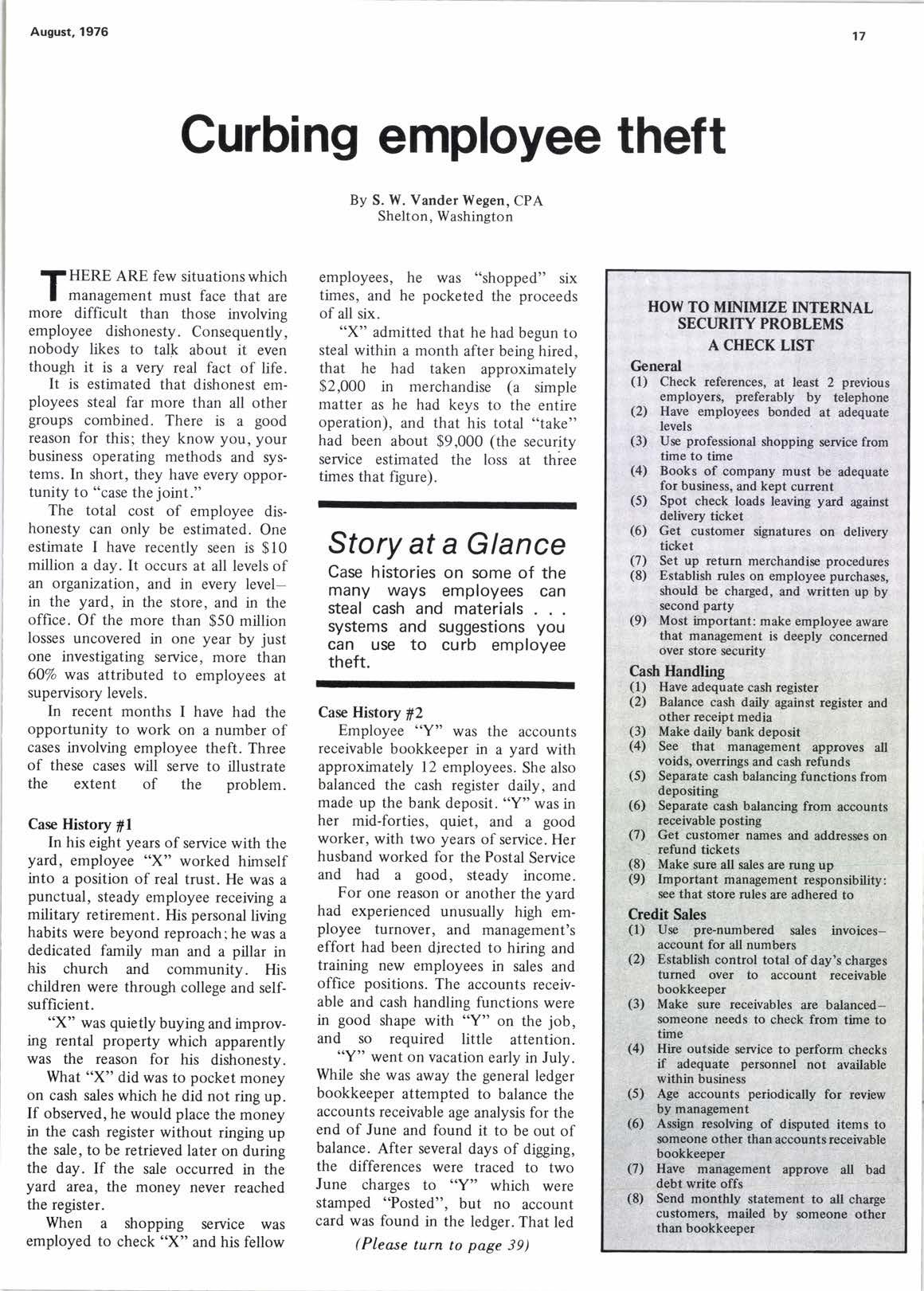
2 minute read
Curbing employee theft
By S. W. Vander Wegen, CPA Shelton, Washington
f HERE ARE few situationswhich I -anug.rn.nt must face that are more difficult than those involving employee dishonesty. Consequently, nobody likes to talk about it even though it is a very real fact of life.
It is estimated that dishonest employees steal far more than all other groups combined. There is a good reason for thisl they know you, your business operating methods and systems. In short, they have every opportunity to "case thejoint."
The total cost of employee dishonesty can only be estimated. One estimate I have recently seen is $10 million a day. It occurs at all levels of an organization, and in every levelin the yard, in the store, and in the office. Of the more than $50 million losses uncovered in one year by just one investigating service, more than 60% was attributed to employees at supervisory levels.
In recent months I have had the opportunity to work on a number of cases involving employee theft. Three of these cases will serve to illustrate the extentof the Droblem.
Case History ifl
In his eight years of service with the yard, employee "X" worked himself into a position of real trust. He was a punctual, steady employee receiving a military retirement. His personal living habits were beyond reproach: he was a dedicated family man and a pillar in his church and community. His children were through college and selfsufficient.
"X" was quietly buying and improving rental property which apparently was the reason for his dishonesty.
What "X" did was to pocket money on cash sales which he did not ring up. If observed, he would place the money in the castr register without ringing up the sale, to be retrieved later on during the day. If the sale occurred in the yard area, the money never reached the register.
When a shopping service was employed to check "X" and his fellow employees, he was "shopped" six times, and he pocketed the proceeds of all six.
"X" admitted that he had begun to steal within a month after being hired, that he had taken approximately $2,000 in merchandise (a simple matter as he had keys to the entire operation), and that his total "take" had been about $9,000 (the security service estimated the loss at thiee times that figure).
Story at a Glance
Case histories on some of the many ways employees can steal cash and materials systems and suggestions you can use to curb employee theft.
Case History f2
Employee "Y" was the accounts receivable bookkeeper in a yard with approximately l2 employees. She also balanced the cash register daily, and made up the bank deposit. "Y" was in her mid-forties, quiet, and a good worker, with two years of service. Her husband worked for the Postal Service and had a good, steady income.
For one reason or another the yard had experienced unusually high employee turnover, and management's effort had been directed to hiring and training new employees in sales and office positions. The accounts receivable and cash handling functions were in good shape with "Y" on the job, and so required little attention.
"Y" went on vacation early in July. While she was away the general ledger bookkeeper attempted to balance the accounts receivable age analysis for the end of June and found it to be out of balance. After several days of digging, the differences were traced to two June charges to"Y" which were stamped '?osted", but no account card was found in the ledger. That led (Please turn to page 39)










